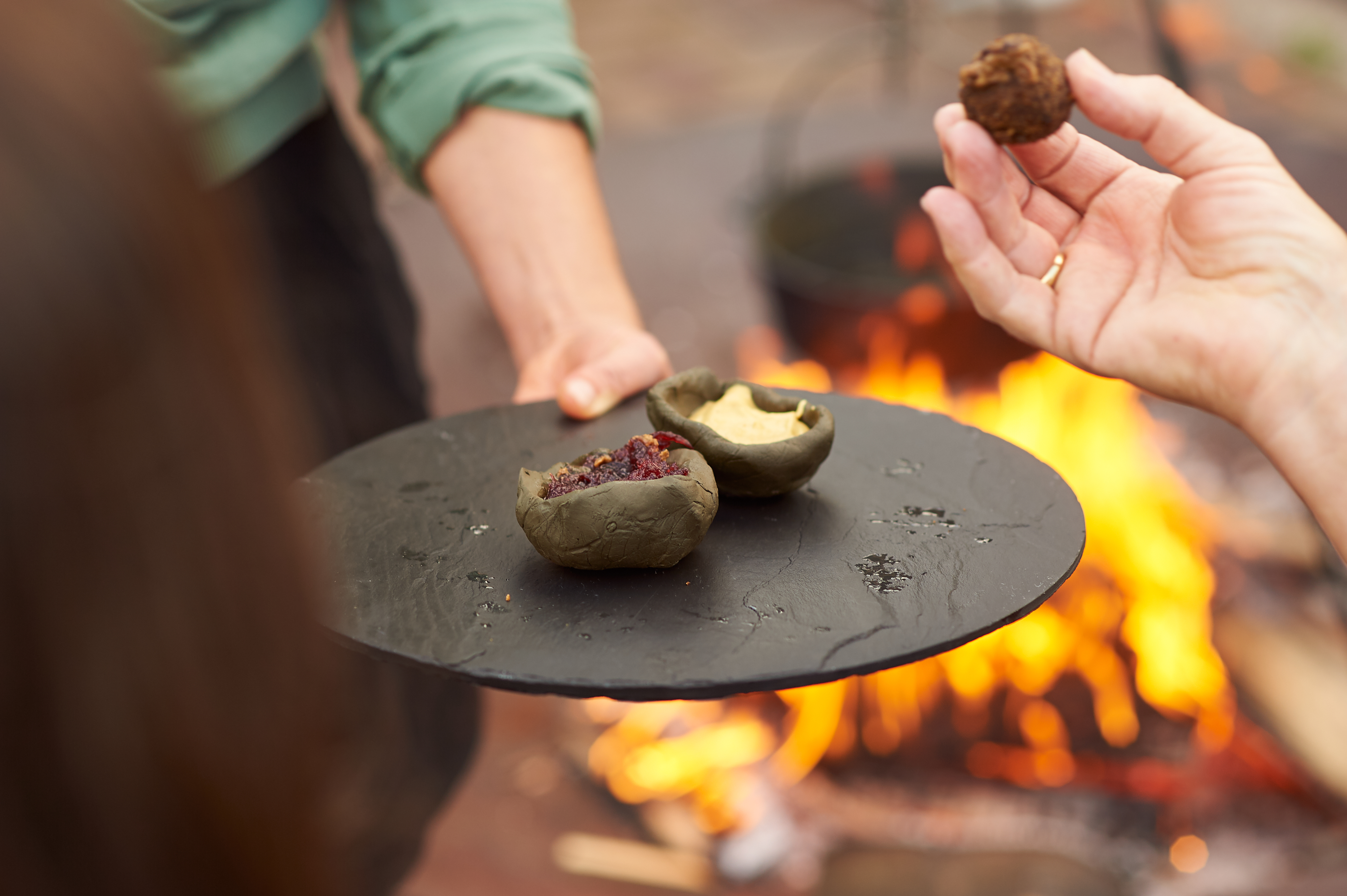BALANOPHAGY — THE PRACTICE OF EATING ACORNS
︎︎︎ Design Research
︎︎︎ Food Design
︎︎︎ Rezept und Event- Entwicklung

Foto:
Elizabeth Vasilyeva
“Balanophagy” comes from ancient Greek and stands for the practice of eating acorns.
Mal wieder aus der Vergangenheit lernen: Eicheln gibt es überall auf der Welt und man findet von überall her Rezepte und Anleitungen zum Verarbeiten von Eicheln zu Gerichten. “Balanophagy” wird seit Jahrhunderten betrieben und ist wie so vieles im Sinne der nachhaltigen Nahrungsmittelproduktion in Vergessenheit geraten. Es wurde ein Bitterballen-Rezept auf der Basis von Eicheln entwickelt:



Fotos: Elizabeth Vasilyeva
Acorn Bitterballen – makes 10 pieces
For the filling:
300 g freshly harvested Acorns, or 75 g already peeled Acorns
7 g Wheat Flour
7 g Margarine, vegan butter or deodorised Coconut Oil
35 ml Vegetable Stock
35 ml Soy Milk
Pepper, Nutmeg and Salt to taste
1 Teaspoon of dark Miso
1 Teaspoon of curry spice powder
Pepper, Salt and more spices to taste
For the crust:
50 g Acorns grits
150 g Breadcrumbs
1 Tablespoon wheat flour
200 ml Water